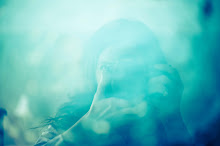the
latin root
photo means "light"
the
latin root
graph means "write"
to write with light... that sounds quite nice!
so.... the basic elements of photography involve light: how much of it to let in, how long to
let it in, how sensitive to be to it. and it's not one element or the other; they all interact
and affect each other.
this entry focuses on that first element...
how much light to let in:
aperturethe best analogy i know is the eye. when it's bright outside, your pupil constricts and becomes a tiny black dot; it doesn't need a lot of light to see its surroundings. when it's dark, the pupil expands and becomes a larger black circle; it needs to take in as much light as available to see its surroundings.
aperture is the "pupil" of the camera lens. the blades in the lens open and close depending on
available light. if it's bright outside, you need a smaller
aperture; if it's darker outside,
you need a larger
aperture.

unfortunately, the way
aperture is quantified is opposite to what you would think. f1.4 = a
large
aperture (large hole-lets in more light) where f22 = a small
aperture (small hole-lets in less light).
 aperture
aperture is measured in
stops of light. the stops are not incremental
(1,2,3...) and it was decided long ago by the some old dudes, so you basically just have to
memorize it.

"from where you are [whatever stop], you can either have half as much [stop down-less light-higher
aperture number] or twice as much light [stop up-more light-smaller
aperture number]."
fortunately, the way
aperture is quantified is in line with the way you would think of
depth of field (
DoF).
DoF is the amount of the photograph that is in focus (sharp). f1.4 = shallow/small
DoF (less in focus - think macro or close-up photography) where f22 = a large
DoF (more in focus - think landscape photography).


controlling a photograph's
DoF is an artistic tool (think
bokeh). you, the photographer, tell everyone else looking at the photograph what is important, what you want them to see. and it makes a difference!
just because it is bright outside, doesn't mean you have to use f22 and sacrifice artistic expression. there are other elements you can control to still get the photograph you want. but, using the available light - choosing to go earlier or later in the day - is also part of planning for a photograph.
some other articles on aperture:
pioneer woman,
ken rockwell,
photoxelsthat's all for today!

































